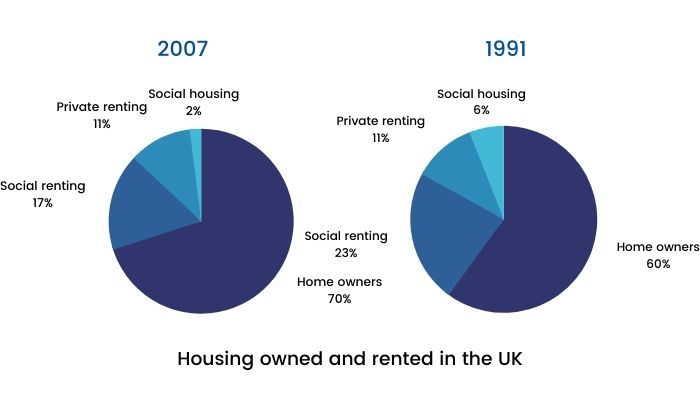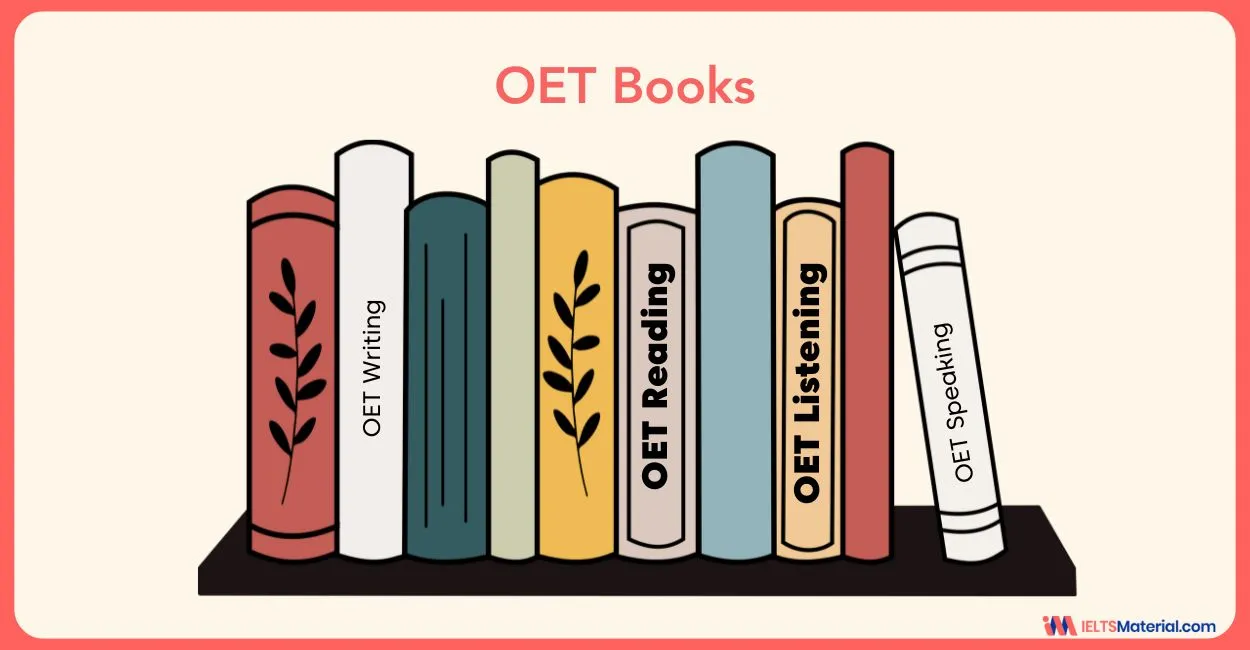IELTS Academic Writing Task 1 Topic 13: Percentage of housing owned and rented in the UK – Pie Chart
Table of Contents

Try AI Essay Checker for Instant Band Score
Describe Image is one of the most complicated tasks in the IELTS Writing module. Without a sound plan, it can be difficult to perform well on the Describe Image exercise. The Pie Chart is the ideal format for practising the Describe Image problem because it has logically and simply organised all of the components. Elements of the Bar Graph include the title, the data, the legend, and the number of pie slices.
Write at least 150 words.
Housing owned and rented in the UK

Report Plan
Paraphrase: show>illustrate; the percentage of housing owned and rented in the UK>the comparability of homeownership and renting in the UK
Overview: The pie charts illustrate the comparability of homeownership and renting in two different years.
Paragraph 2: (1) Compare the percentages of different houses. Give figures.
Paragraph 3: (1) Compare the percentages of different houses. Give figures.
Sample Answer
The given pie charts illustrate the comparability of homeownership and renting in the UK in two different years, 1991 and 2007. In 1991, owning a house was the most popular housing type, accounting for 60%, or over half of the statistics. Social rented homes, amounting to 23% or nearly one-third of homes, turned out to be the next largest sector. The rest of the houses were typically privately rented (11%), with a tiny fraction being social housing (6%).
On the contrary, in 2007, the number of homeowners had upsurged to 70% or almost three-quarters of all homes. Most of the increase in homeownership can be explained by the decrease in social rented homes, which had dropped to 17%.
The percentage of houses privately rented stayed consistent and unchanged at 11%. However, compared to 1991, in 2007, there were 5 million more homes. From 1991 to 2007, the number of social housing had decreased three-fold from 6% to 2%, thereby being the least popular type of housing.
Get evaluated for FREE!
Got a quick report in your mind for this question. Don’t hesitate to post the same in our comment section. We will evaluate the report/letter and email you the band score & our trainer’s comments. And, this service is entirely free.
Also check:
- IELTS Writing Task 1
- IELTS Pie chart
- IELTS Bar chart
- IELTS Table chart
- IELTS Writing task 1 line graph
- IELTS Writing task 1 Map
- IELTS Writing task 1 tips
- IELTS Writing tips
- IELTS United Kingdom / IELTS UK
- IELTS Writing recent actual test
- IELTS Writing Answer sheet
- IELTS map vocabulary
- IELTS Writing Task 1 Connectors
Practice IELTS Writing Task 1 based on report types

Start Preparing for IELTS: Get Your 10-Day Study Plan Today!
Recent Articles

Nehasri Ravishenbagam

Nehasri Ravishenbagam

Kasturika Samanta





Post your Comments
9 Comments